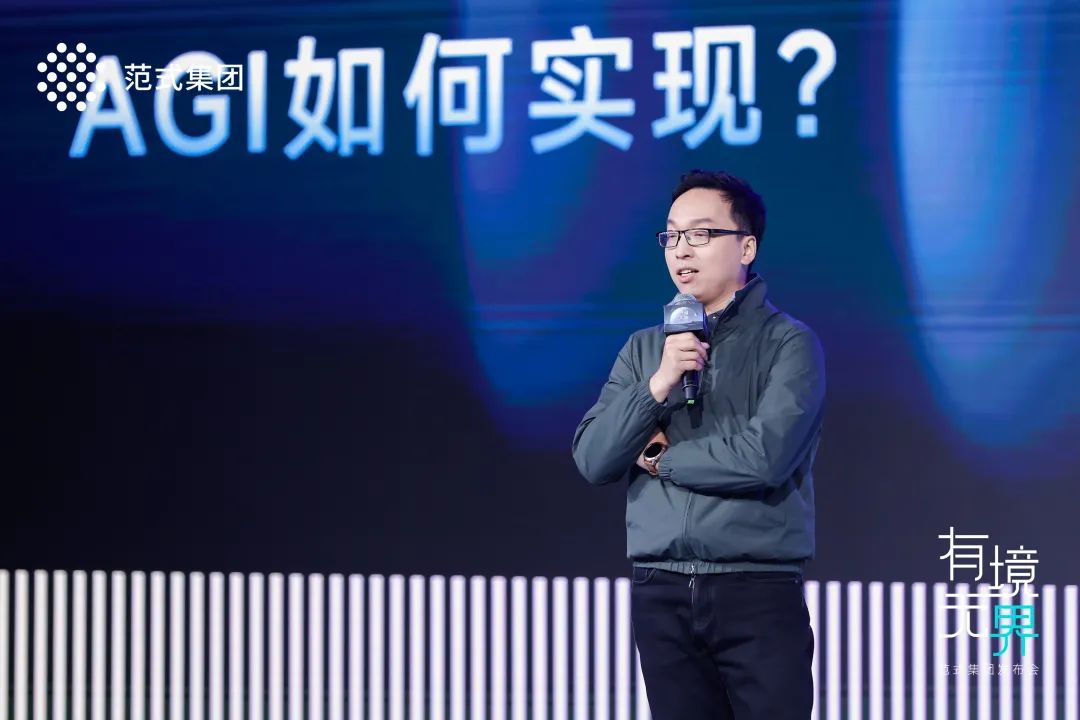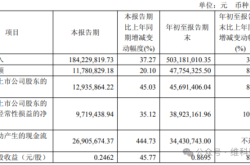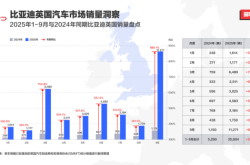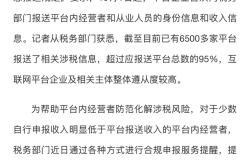The Expansion Speed of AI Applications: A Determinant of Hong Kong Stock Rally Longevity
![]() 04/02 2025
04/02 2025
![]() 552
552

Image and Text | Tang Jie
The global technological revolution spearheaded by Deepseek has gained momentum. Since January, Chinese assets have risen steadily under the global capital spotlight, yet recently, the Hong Kong stock market has experienced a wave of adjustments. This capital market, which has been one of the best performers globally this year, is now undergoing a new round of revaluation.
As of March 31, the P/E ratio of Hang Seng Tech stood at around 22.4 times, significantly narrowing from its peak of 26 times earlier this year. The Hang Seng Index has remained relatively stable, with a current P/E ratio of 10.3 times, not much different from its high of around 11 times this year. Compared to the Nasdaq Index's P/E ratio of approximately 38 times as of March 31, Hong Kong stocks still exhibit strong valuation appeal, underpinning the foundation for a technical bull market.
In recent years, Chinese assets have been unjustifiably undervalued, with the core driver of this rally being all things AI-related. As we all know, the Nasdaq Index surged from around 10,000 points in mid-2022 to 20,000 points earlier this year, with generative AI large models playing a pivotal role. The capital market views this as a revolutionary technology capable of transforming human society, akin to the internet, PCs, and mobile phones, thus providing unlimited financial support to related stocks.
After the recent adjustments, the bottom phase of Hong Kong stocks is becoming increasingly clear, and a crucial factor in determining the sustainability of subsequent rallies is the expansion speed of AI applications and their ability to enhance current business operations.
01 Continuous Rise of Technology Stocks
Currently, the rally in Hong Kong technology stocks is primarily fueled by capital interest stemming from advancements in AI technology.
While both benefit from the AI-driven bull market, the performance of individual stocks differs significantly between Hong Kong and US technology stocks. In the US, the rally was initiated by the explosion of chip design company Nvidia, whereas in Hong Kong, there is a clear focus on applied technology. Several technology companies with strong performance and significant weight belong to the applied technology sector.
This difference is straightforward. On one hand, the proportion of applied technology in Hang Seng Tech is inherently more prominent than in Nasdaq. On the other hand, the original disruptive innovation of Deepseek, which ignited China's technology assets, and its subsequent enormous impact on China's technology industry, occurred predominantly in the software sector.
Regarding AI-triggered market changes, it was not until last year, when Palantir's share price began to soar, that AI applications gradually became one of the main market themes in the US. However, following the disruptive innovation of Deepseek, global capital's focus on Chinese technology has been on innovations at the software and application levels. The main theme of the US bull market shifted from AI's starting point, "chips," to applications such as software, whereas Hong Kong stocks directly exploded from the AI application side, with multiple thematic lines emerging by now.
Before the rally on January 13, the P/E ratio of the Hang Seng Index was 8.6 times, and the P/E ratio of the Hang Seng Tech Index was 19.1 times, both within the bottom 10% percentile of the past decade. Notably, even compared to China's A-share ChiNext Index (31 times), Hong Kong stocks are significantly discounted, offering a higher margin of safety and growth potential. The presence of significant software technology stocks, coupled with substantial price discounts, has led various funds to continuously increase their bets on Hong Kong stocks.
Among them, the more representative ones are southbound funds and overseas passive funds.
Since 2025, southbound funds have cumulatively net bought over HK$380 billion, more than five times the amount in the same period last year. At the same time, the proportion of southbound funds has jumped from 20% in 2020 to 45%, essentially becoming the core force in pricing Hong Kong stocks. Overseas passive funds have also continued to flow in during February and March this year. Although the scale is smaller than during last year's "924" rally, they have still become another important force driving the rise of Hong Kong stocks.
It is worth mentioning that southbound funds, which have already gained pricing power, clearly prefer AI technology sectors over dividend sectors at the beginning of last year. Beyond traditional domestic capital preference stocks such as banks and telecommunications, they have accelerated substantial inflows into technology sectors like media, electronics, and communications, as well as related discretionary consumer goods sectors, contributing to the outstanding performance of Hong Kong technology stocks.
Considering positive domestic policies, unchanged AI narrative logic, and the underperformance of US stocks, Hong Kong stocks are expected to receive further attention from foreign capital in the future, coupled with continuous efforts from domestic capital, to achieve sustained growth.
02 Core Driving Force for Sustained Growth of Hong Kong Stocks
As of March 31, the P/E ratio of the Hang Seng Tech Index has increased by 18% from its year-low to around 22.4 times, and the P/E ratio of the Hang Seng Index has increased by 19% from its year-low to 10.3 times. Compared to the past decade, they are still relatively undervalued, and there has been no reversal in the technical bull market of the entire Hang Seng Index.
It can be objectively stated that the Hang Seng and Hang Seng Tech Indices are still on the low and cold side among major global stock indices, including A-shares. It is still too early to panic about the end of the bull market and the transition to a bear market. With the acceleration of the commercialization of domestic large models and the deepening of domestic substitution of semiconductor equipment, the dual-wheel drive of "computing power infrastructure + terminal applications" for Hong Kong technology stocks is becoming increasingly clear. The most important anchor driving further gains in Hong Kong stocks is:
The speed of AI applications, or in other words, the integration speed of AI with industries.
Understanding that the integration speed of AI with industries directly determines the efficiency of transforming its technological value into market value is crucial, as it directly affects corporate profit expectations and industry valuation logic. In this regard, large technology companies are bound to be the first to attract market attention.
Just like Google, Meta, and Amazon in the US, the competition among large technology companies revolves around "scale of expenditure." Whoever can expand capital expenditure ahead of competitors, whether on the B-end or C-end, to keep customers within their platform, can ensure their future presence at the table.
In this round of rally in Hong Kong technology stocks, Alibaba's share price has surged by 80% since January 13, nearly doubling. The market previously almost completely ignored the value of Alibaba Cloud when valuing Alibaba, relying solely on e-commerce. Now that the AI narrative logic has changed, the value of Alibaba Cloud, China's leading cloud service provider, has begun to stand out, necessitating a reevaluation of Alibaba.
After the recent round of adjustments, small and medium-sized technology companies are expected to be the first to recover. These companies are rapidly advancing AI applications and expanding them on the business side. Their innovation capabilities are on par with their US counterparts like Palantir and BBAI.
Taking Palantir as an example, as one of the earliest AI applications in the US stock market, the company started with AI in the military field and expanded its enabling capabilities to enterprise services. In Q4 2024, the company's revenue increased by 36% year-on-year and 14% quarter-on-quarter, reaching $828 million.
On the Hong Kong stock market side, as a pure AI enterprise that can be directly benchmarked against Palantir, the fundamentals of Fourth Paradigm have been continuously improving since its listing. According to the company's 2024 annual report, the company's total revenue for the year was RMB 5.26 billion, a year-on-year increase of 25.1%; gross profit was RMB 2.24 billion, with a gross margin of 42.7%; the annual loss attributable to owners of the parent company was RMB 269 million, a year-on-year narrowing of 70.4%, with continued loss reduction.
It is worth mentioning that if the company's performance in H1 and H2 of 2024 is calculated separately, the company's fundamental quarterly improvement is very prominent, with H2 revenue growing by 81% quarter-on-quarter and gross profit growing by 84% quarter-on-quarter. The adjusted net loss narrowed from RMB 170 million in H1 to RMB 120 million in H2. This rapid improvement in fundamentals, driven by the advancement of AI, is very similar to that of outstanding AI stocks in the US stock market such as Palantir.
Behind the rapidly improving performance is a substantial increase in the company's revenue structure, primarily consisting of enterprise services. At the earnings conference, Chairman Dai Wenyuan stated that Fourth Paradigm, with its "Prophet AI Platform" as the core, adopts a dual-wheel drive model combining generative AI and decision-making AI to provide industry AI large model development and management services to 22 industries (such as transportation, finance, etc.). This part of the revenue grew by 46.7% year-on-year throughout the year.
Dai Wenyuan also stated that in 2024, the company implemented enterprise AI Agents in various fields such as finance, hydropower, and chronic disease management, significantly enhancing interaction and collaboration between enterprise business personnel and underlying decision-making systems. It continued to consolidate its strong position in energy, electricity, and finance, with a total of 161 benchmark users and a retention rate exceeding 90%. The NDER (Net Dollar Expansion Rate) of benchmark customers reached 110%.
In our view, the most crucial aspect of evaluating an AI application company is whether it can achieve application expansion through the AI capabilities accumulated in previous industries. Just like Palantir, which expanded its AI capabilities from the military to commerce, Fourth Paradigm has expanded AI from the financial industry to various industries over the past decade. What is more noteworthy is its announcement on March 18 to establish a consumer electronics business, further expanding the AI capabilities accumulated in various vertical industries in the past, becoming an AI enterprise with a wider range of application scenarios.

According to the plan, the original enterprise services business will become the core subsidiary of Paradigm Group (the listed entity), and a new business segment, the consumer electronics business, has been launched. Its positioning is to provide AI Agent-based hardware and software integrated solutions for consumer electronics products. In other words, Paradigm will diversify from its original enterprise services positioning to enterprise services + consumer electronics.
Specifically, the path to AGI involves continuously improving the communication capabilities of AI Agents and enriching the world model's understanding of various vertical segments to enhance AI's ability to solve problems in these verticals. In layman's terms, it is enabling AI to complete tasks that only humans could do in the past, rather than just giving humans suggestions and solutions, which cannot be fully implemented as generative AI currently does.
This is currently the biggest pain point of generative AI and the biggest opportunity in the future AI world. The future positioning of Fourth Paradigm's consumer electronics business is to provide AI Agent-based hardware and software integrated solutions for consumer electronics products. Whether the consumer electronics product is a mobile phone, tablet, computer, or car, the AI Agent will understand and communicate any user needs and connect numerous vertical AI capabilities and a wider range of services.
Linking products and users through AI Agents from the physical world is an important future development scenario for artificial intelligence. Imagine the increased commercial value and application breadth of AI when it transforms from a product that only "talks big" into one that can assist you with any need. Under such an upgrade, the valuation logic for companies like Fourth Paradigm will also undergo significant changes.
03 Conclusion
The integration of AI and consumption is not only the focus of future market attention but also a direction encouraged by the state.
According to the recently released top-level document, the "Special Action Plan to Boost Consumption," it clearly proposes to promote "AI + consumption," accelerate the development and application promotion of new technologies and products such as autonomous driving, smart wearables, ultra-high-definition video, brain-computer interfaces, robots, and additive manufacturing, and open up new high-growth consumption sectors.
More importantly, "AI + consumption" represents an unprecedented "new species." After the issuance of the top-level design document, there is a high likelihood of further detailed documents being issued in the middle to late part of this year or next year. At that time, we will see further encouragement and cultivation measures for the integration of AI and consumption.
For example, in terms of technical standards and data, private enterprises that take the lead in layout may have the opportunity to set industry standards, further consolidating their leading position. Regarding financing and subsidies, there may be some inclination towards AI products in future national subsidies. Additionally, there will be pilot projects to expand application scenarios, promoting the maturation of AI consumption on a larger scale.
These forthcoming policy benefits will serve as a favorable tailwind for AI application enterprises that are still in their nascent stages. The fundamentals and stock values of these companies in the future hold considerable promise and are well worth anticipating.
Disclaimer: This article is intended solely for educational and exchange purposes and should not be construed as investment advice.








